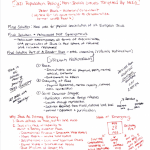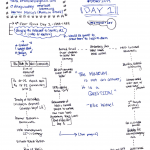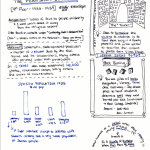Our first day of the Belfer conference in Washington D.C (see the bottom of this blog post for more information on how to apply) was filled with opportunities to learn, reflect and explore the museums wide variety of resources. My colleagues and I were so excited to be in D.C that we decided to get up early and walk to the museum from our hotel, which was about a 30 minute walk. We had a beautiful July morning and we were able to walk past several notable buildings including the building “In Memory of the Heroic Women of WWII” and the White House – it really made us feel as though we were living like a local!
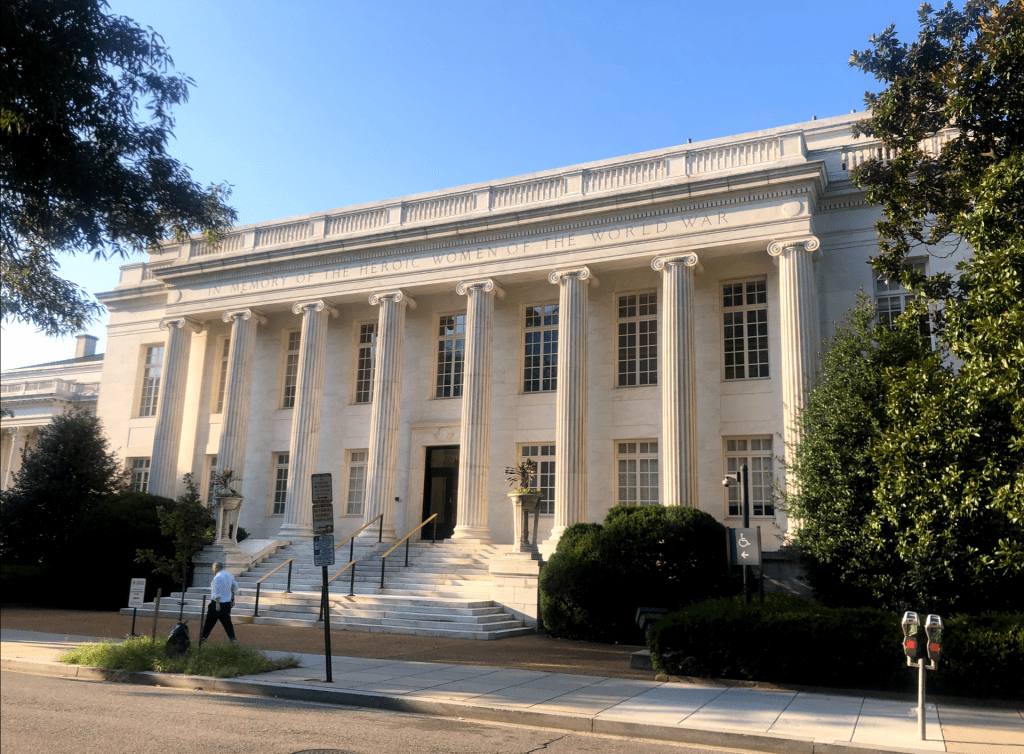
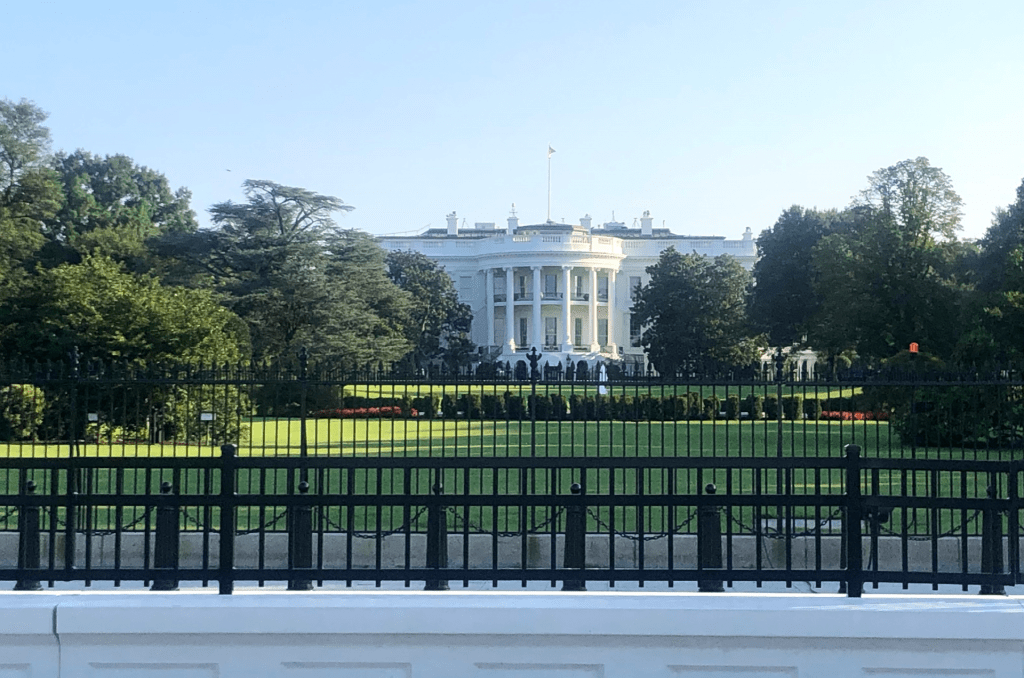
When we arrived outside of the The United States Holocaust Memorial Museum the first element that we noticed were the banners on the side of the building. These banners displayed phrases such as “Ask Why”, “How do we keep their memory alive?” and “Never Again What You Do Matters”. Each of these phrases have been at the forefront of our lessons as we teach about the Holocaust. In fact, while in line to get into the museum we shared our beliefs of how this experience would change the way we teach the events of the Holocaust.

Once inside we checked into our specific homerooms where we were able to meet our wonderful facilitators, fellow conference attendees and begin digging through the immense amount of books and resources gifted to us as attendees of the conference. We then headed off to one of the museum auditoriums for our introduction keynote where we learned about the history of the museum, its mission and how the museum is designed to teach visitors. One of the features that I found to be the most powerful was learning about the intriget process that went into the Museums overall design. Throughout this Museum there are three goals for visitors, these goals include learning, remembering and acting. When I told my husband I would be spending three days in this museum he couldn’t believe it, in fact I think his exact words were “what are you going to do in one building for three days”, but I am so thankful for this time. The Belfer Conference purposely broke apart each day with a guiding focus and we were able to explore, learn and synthesize the material in a manner that allowed plenty of time for reflection. We did not go through the permanent exhibit all in one day, but instead broke up the exploration of the permanent exhibit into one floor each day.

Today our focus was on the 4th floor “The Nazi Assault 1933-1939”. As a launching point we watched a video entitled “Bringing the Holocaust to Shonto, Arizona”. For any teachers out there who are trying to convince your fellow colleagues or administrators that a Holocaust curriculum is necessary in your schools have them watch this video. The power that the content and lessons had on this group of students is extremely inspiration and proves that educating students about the Holocaust is element that must be a part of each districts curriculum. With opening remarks finished, I headed to the elevators to ride to the fourth floor. One of the elements of this conference that I appreciated was that the museum was open to Belfer conference members prior to opening to the general public. This meant that today I was able to walk through the 4th floor exhibit and take time to read the content and learn from the resources without having to fight the crowds. As a teacher, I really valued that the museum provided this opportunity for me. Prior to entering the elevator I picked up an identification card, which details the experiences of one person who was persecuted by the Nazi regime. I’ve used similar identify cards within my own classroom for years and it seems to be one of the elements that really helps my students to make connections with the real individuals who were persecuted by the Nazi’s. I immediately found myself reading about my individual and hoping when I got to the end of their story they would survive.
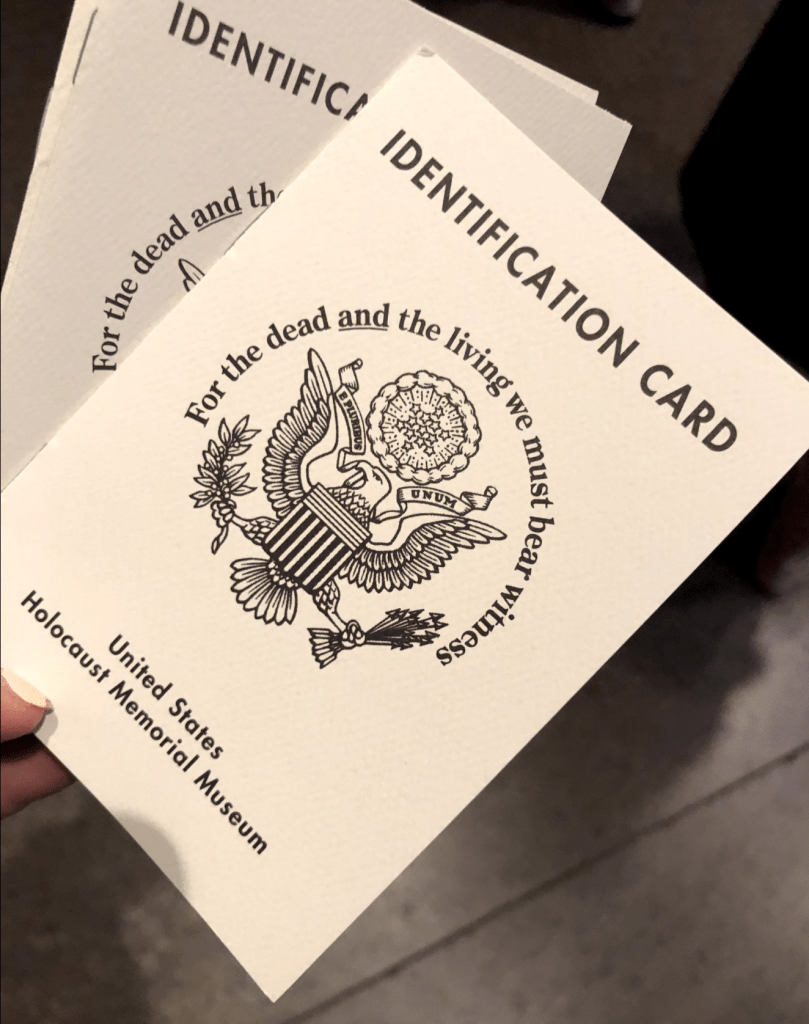
When the elevators doors opened to the 4th floor permanent exhibit I immediately felt transported back to 1933, as the artifacts and photos take visitors back to the time when Hitler rose to power and the nation of Germany was mobilized to target any groups who were determined as “enemies of the state”. With so much to learn within this exhibit I spent over an hour walking around and taking it all in. However, there were a few elements that really found a place in my soul and I plan to use these elements to enhance how I teach my students about the Holocaust. The first was titled “Book Burning”. Book burning is a subject that several of my students have heard about due to the book “The Book Thief” and one that we briefly touch on, however, seeing this section of the exhibit I realized how important it is to teach my 6th graders the significance of these events and what it meant, as well as what emotions it invoked in the people of Germany. I began to think about how our students are surrounded by books in their everyday life. We have our own classroom library, we have a school library, they have their curriculum books in their desk and many have at least two novels they are interested in reading on their desk. I began to wonder of how many of these books the Nazi’s would deem as inappropriate and would therefore be subject to being burned. More importantly I began to wonder, what books would be left. This is an area I will continue to reflect on and I look forward to working with my team to determine how we can best bring this topic to life for our students.
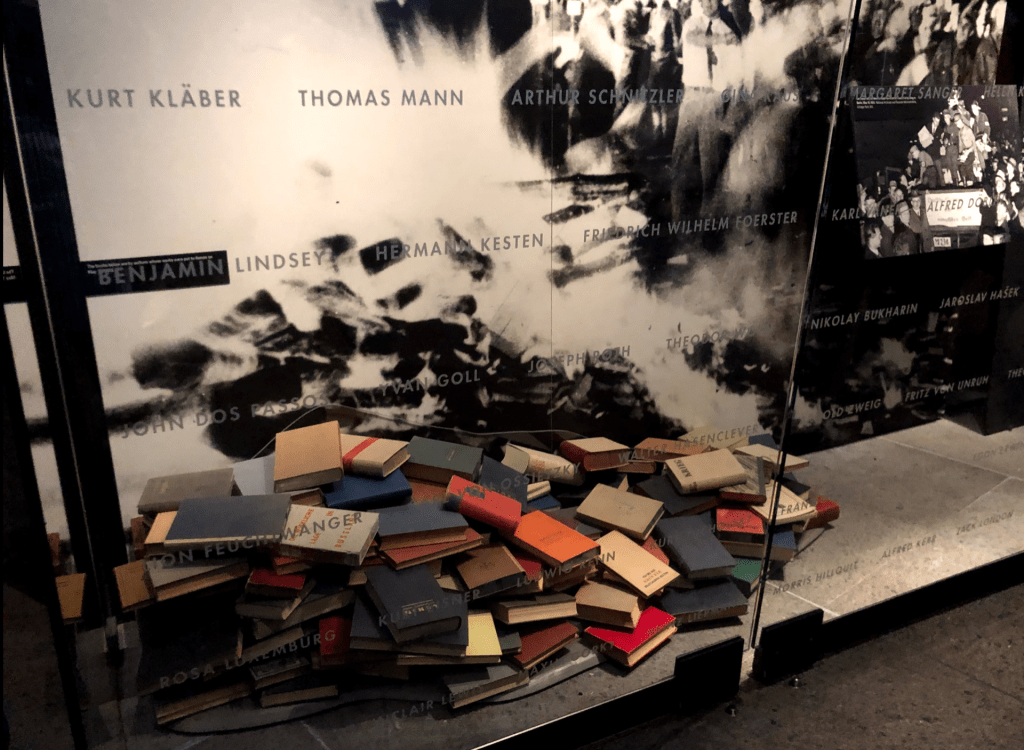
As we left the fourth floor exhibit I found myself in the “lost communities hallway”, a hallway used to transition from the 4th floor to the other permanent exhibits. The hallway walls were made of etched glass that displayed the names of towns and cities where the Jewish population was wholly or partially lost as a result of the Final Solution”.

As I walked through the hallway, my mind was immediately taken back to the stumbling stones I discovered throughout Germany just a few weeks before. I found myself searching for the towns I visited and thinking back to the individuals whose stories I followed based on the information from their stones. The towns of Göttingen, Leipzig and Berlin were among the hundreds displayed on this wall. As I write this post tonight I find myself looking back over the names of the individuals I found in each of these cities and making a promise to myself that my students will learn about these individuals and their names will not be forgotten.
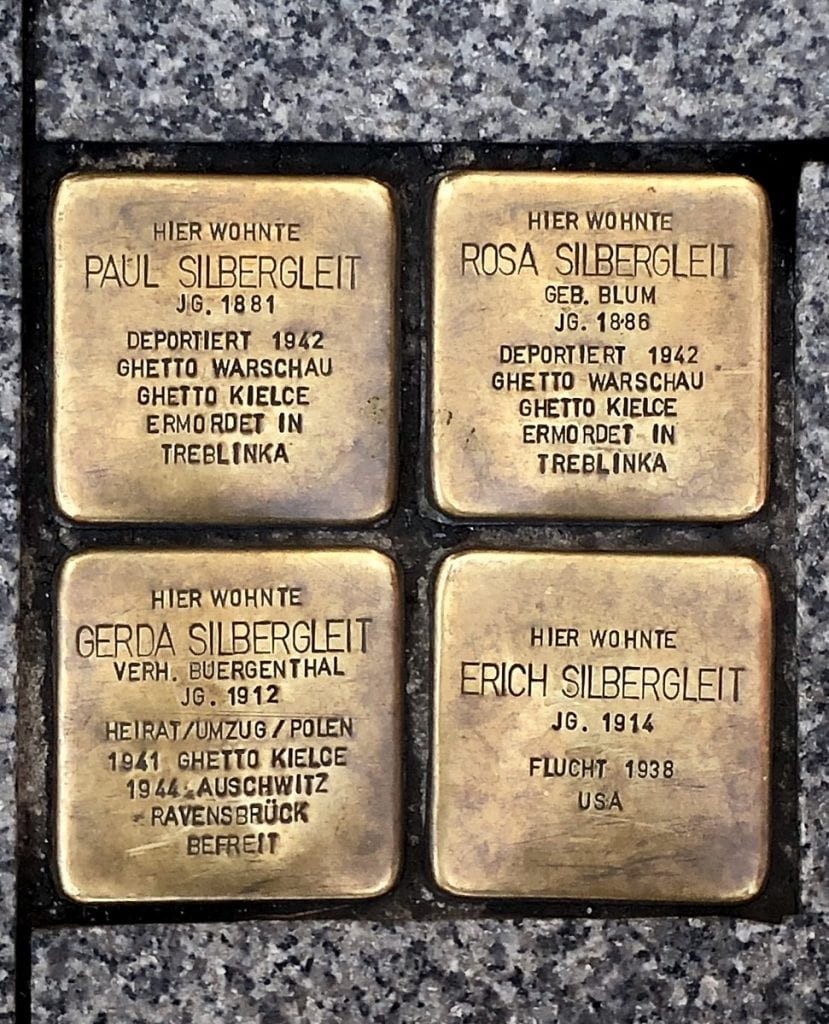
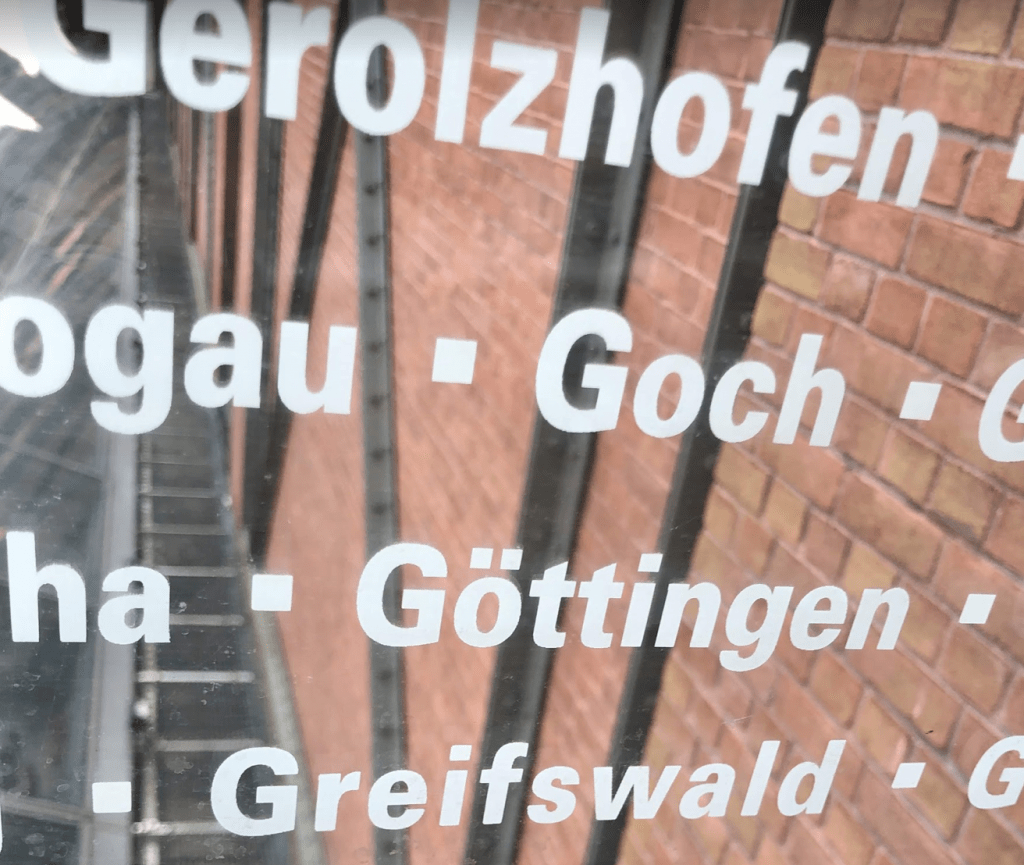

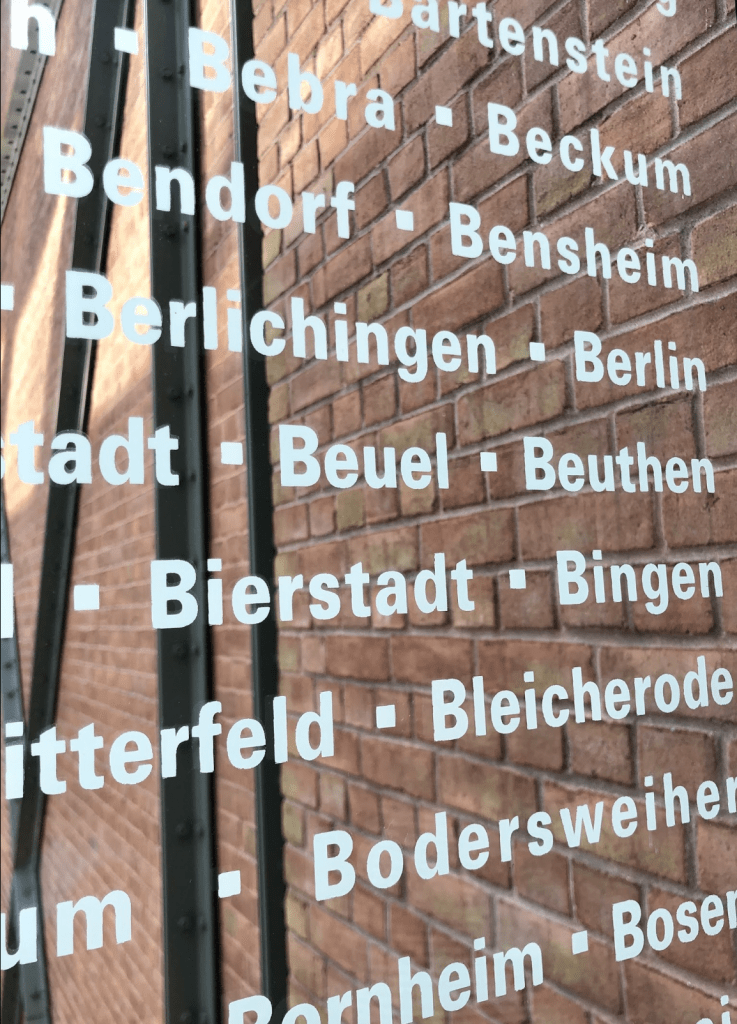
Prior to heading back to our classroom we stopped at “The Tower of Faces”. Even as I write this tonight I am struggling to give this section of the exhibit the due diligence it deserves. “The Tower of Faces” also known as the “Yaffa Eliach Shtetl Collection” is three floors high and is a memorial to the Jewish community of the Lithuanian town of Eisiskes. Immediately when I stepped foot in this tower I was taken aback by the thousands of photos that lined the walls. These photos were of families, children, friends, people in love; the tower was filled with photos that I believe I could find similar to any home I might walk into today. Luckly, as I was examining one of the photos one of the conference facilitators and museum guides Mr. Warren Marcus gave insight into the exhibit. He shared how important it is to humanize the victims of the Holocaust to our students. Mr. Marcus asked those of us within the tower to pick out one photo that reminded us of one we might take with our family or friends. My eyes immediately feel on a photo of two sisters, clearly a family photo that was posed as the sisters even wore matching dresses, despite their age difference. I instantly thought back to the many photos my mom had taken of my sister and I and I even though I had never met either of these individuals, I felt a certain connection.

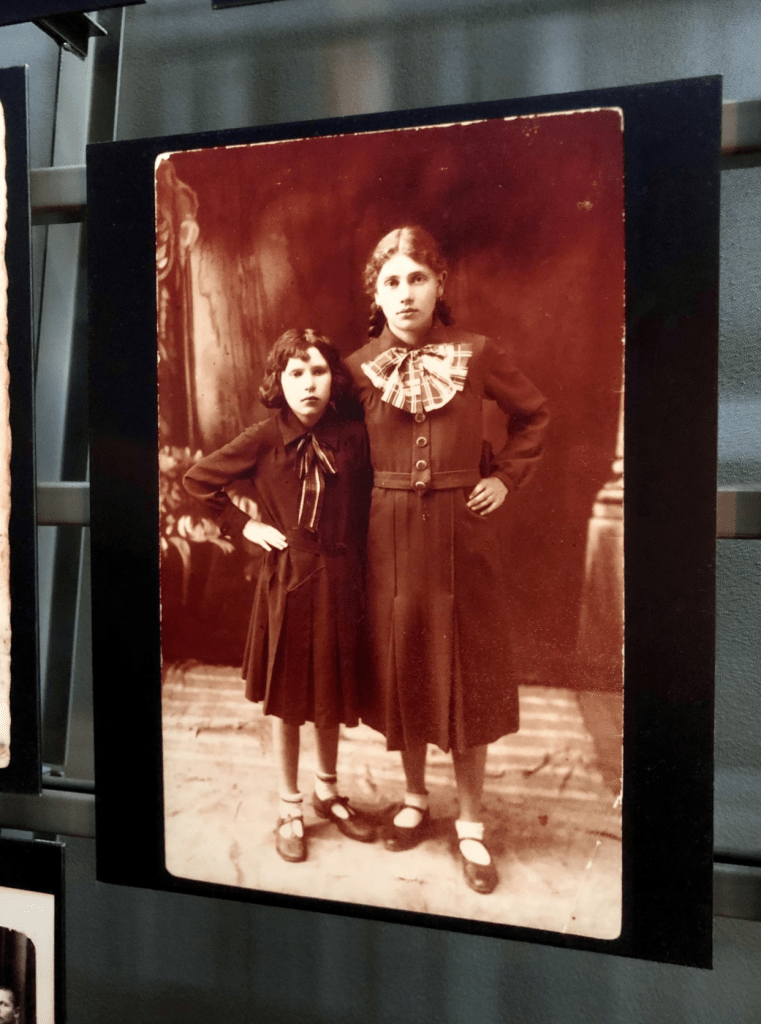
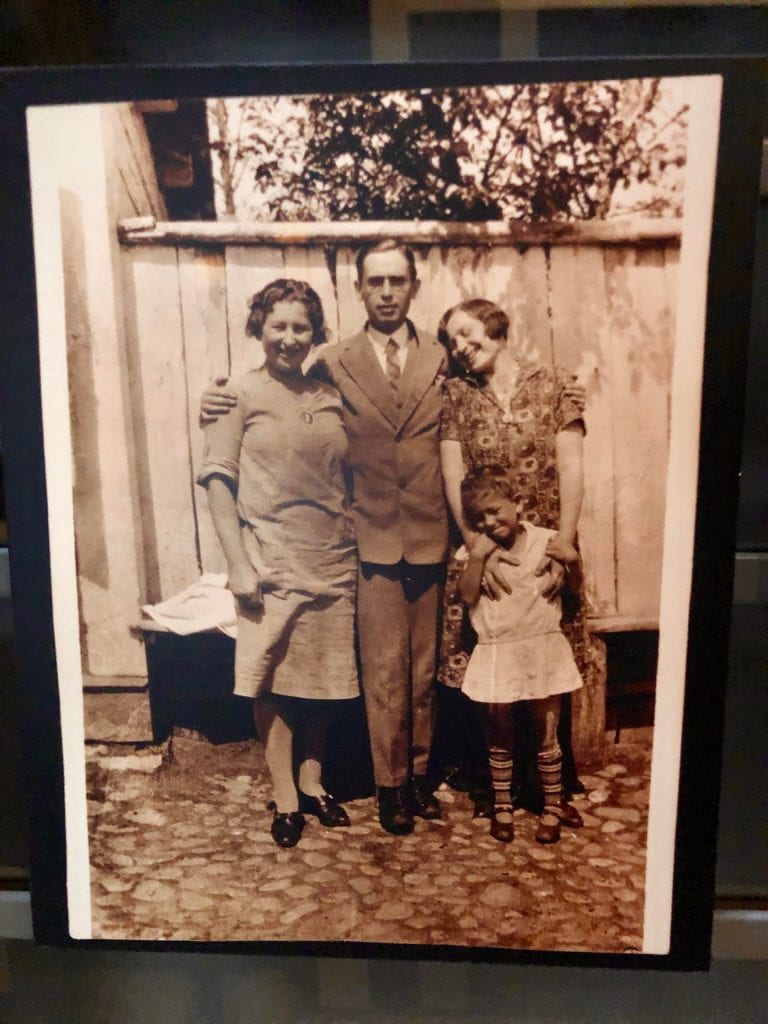
Mr. Marcus explained that one way to bring this section of the exhibit into our classrooms is to ask students to bring in their own family photos, then have students find similarities between their own photos and the photos from the Eisiskes Village. “When students see these connections you will have helped them to humanize the victims” Mr. Marcus explained. He then pointed out a photo that many of our students could relate to because the individual in the photograph was Mickey Mouse. This he explained was used by a gentleman from the village to propose to his fiancé in hopes that no one can say no to Mickey Mouse.
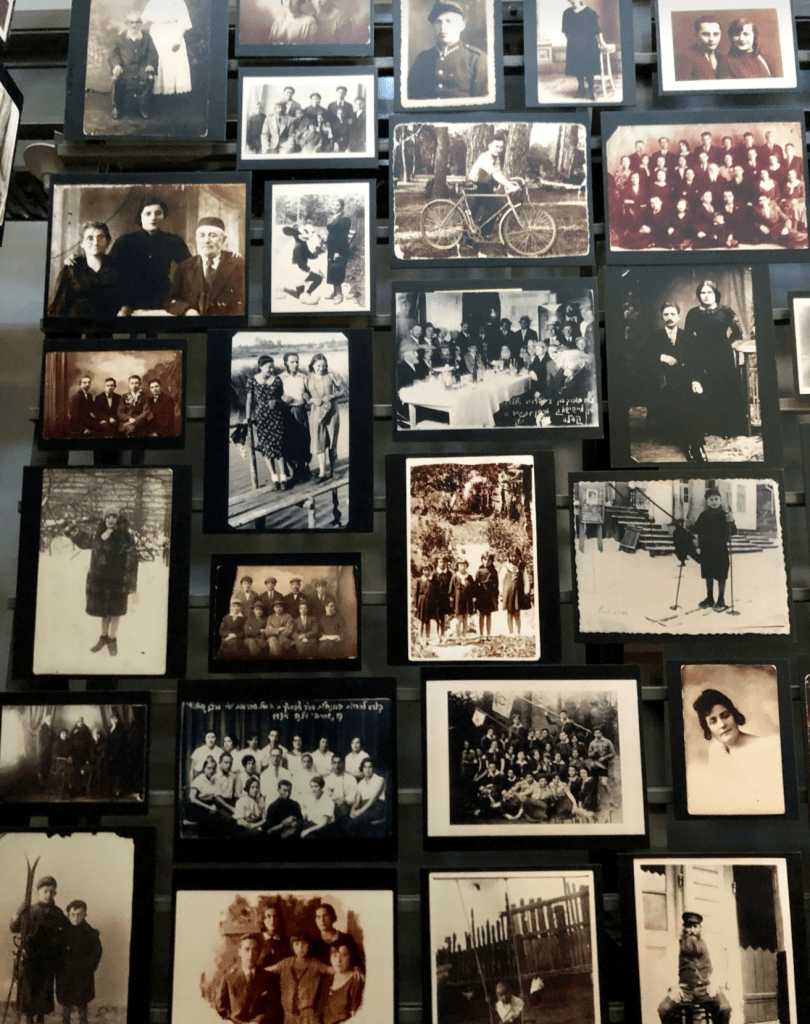
My colleagues and I continued to point out the various photos that we connected to and each time I found a little piece of my heart hoped to learn that these individuals had been a few of the lucky ones to survive. As I neared the exit of this section of the exhibit I came across the plaque that explained the story behind “The Tower of Faces”. The photographs in this tower were all taken between 1890 and 1941 by Eisiskes photographer Yitzhak Uri Katz a citizen of the town and several of his colleagues. The majority of the towns population was Jewish, with nearly 3,500 Jews living in the town in 1939, however, Jewish had resided in the town for nearly 900 years prior to 1939. When German troops entered the town many of the men were required to complete forced labor. By September of 1941 all Jewish individuals in the town were required to turn over all valuables to the Nazis. On September 25th all men were murdered within the town and the following day the same fate occurred to the women and children of the town, this included the photographers of these photos. At the very end of the plaque it stated “Nine hundred years of Jewish life and culture in Eisiskes came to an end in two days. Today no Jewish live in Eisiskes”.

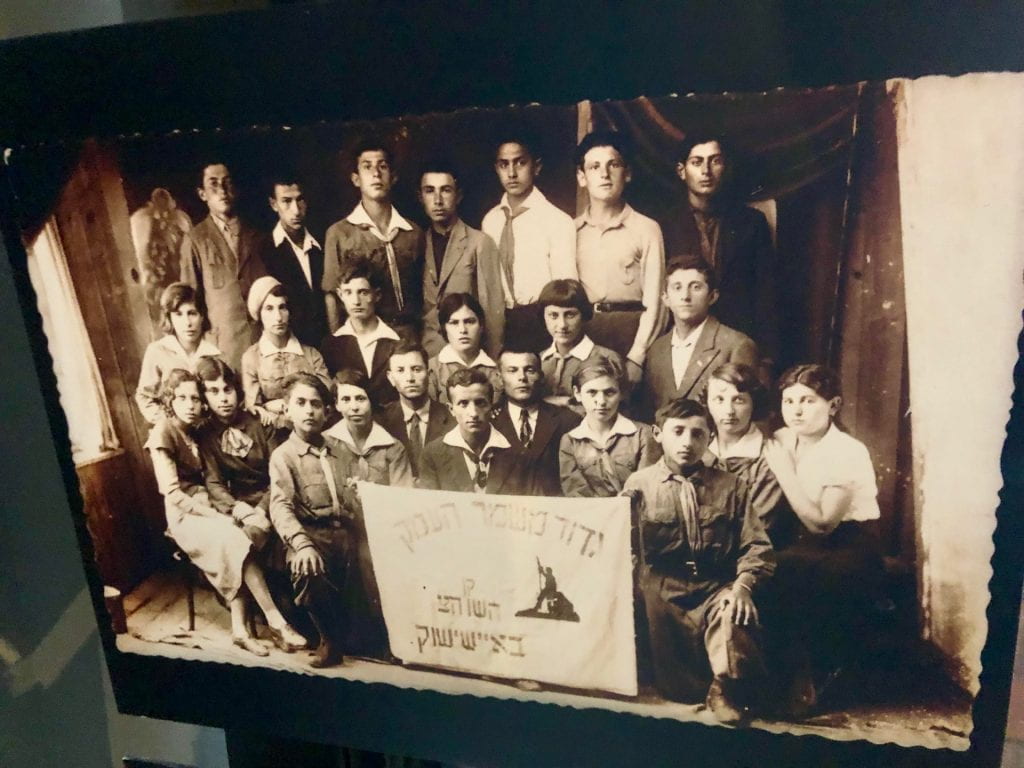
This exhibit of Jewish life in the town was gathered by Dr. Yaffa Eliach, who spent her early childhood in Eisiskes and was the granddaughter of the photographer Yitzhak Uri Katz. She was only one of twenty-nine members from her town to survive the Holocaust. See the link below to read her incredible survivor story. She founded the first Center for Holocaust Studies in the US and used photos from her collection to create the Tower of Faces to ensure that the Jewish citizens in the town of Eisiskes would always be remembered.
After lunch my afternoon was filled with small group break out sessions on how to think critically about antisemitism today, learning how to write a rationale for teaching about the Holocaust and how to choose the right resources about the Holocaust to fit the needs of my students. Two of the breakout sessions that really stood out to me were the guidelines for teaching the Holocaust and the Timeline Activity session, as both changed my thinking, as well as how I will teach the Holocaust to my students. During our guidelines for teaching the Holocaust session our facilitators emphasized the high level of sensitivity and awareness the topic of the Holocaust commands. To promote effective teaching of this topic the museum has established ten guidelines for teaching the Holocaust. If you are fortunate enough to attend the Belfer conference these guidelines are interwoven into each day and really serve as the foundation for a Holocaust curriculum. The guidelines are:
- Define the term Holocaust
- The Holocaust was not inevitable
- Avoid simple answer to complex questions
- Strive for precision of language
- Strive for balance with who’s perspective informs your study of the Holocaust
- Avoid comparisons of pain
- Don’t romanticize history
- Contextualize the history
- Translate statistics into people
- Make responsible methodological choices
In the past, I’ve always taught the Holocaust using the terms upstanders and bystanders. However, after learning and participating in several conversations with my classroom facilitators I learned that I have to move away from putting people into categories and instead use spectrums of behavior when teaching about individuals involved in the Holocaust. This is not a black and white topic and many people in history can have elements of both an upstander and a bystander. This was really an ah-ha moment for me and I can’t wait to go back and share my findings with my team to collaborate on how we can use this spectrum of behavior within our classrooms.
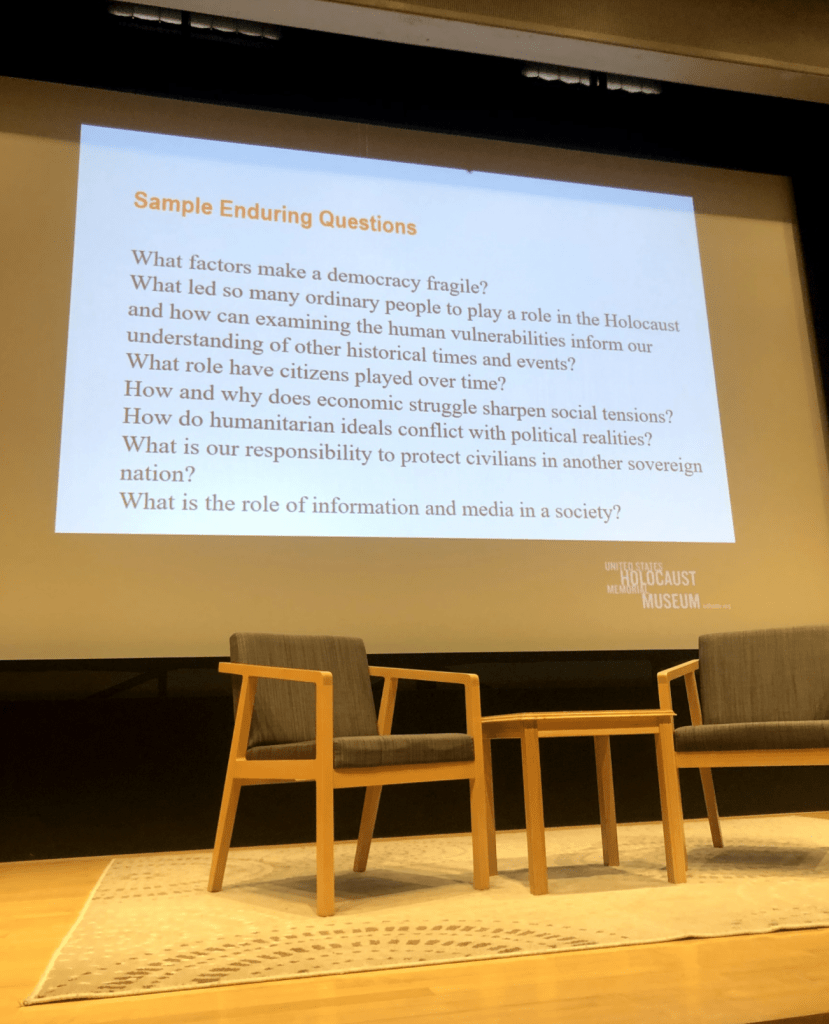
The Timeline activity also resonated with me as I use a timeline within my classrooms, however, the ideas shown here were much more expansive and would bring student thinking to the next level. The museum has just recently updated their website, including all teaching materials. Within this website you can find various timeline activities you can complete with your students. This includes a “State of Deception” timeline, where students can learn how the minds of German citizens were being conditioned to think in a particular way. There is also an area that includes law cards, which could also be used as part of a timeline. These law cards include over 100 cards that show all of the various laws the Nazi Regime established to segregate those who were deemed inferior. Finally, there is a historical events section that can also be used as a timeline activity. This section explores events throughout the world that were occurring in unison with the Nazi Regime. I immediately began to envision how each of these activities could overlap using string or other tools to help students see how one event can have a domino effect. (See the links below for all three resources I just mentioned.)

My first day of the conference wrapped up with a lecture from Peter Black, a historian and consultant who worked for the United States government to denaturalize former WWII Nazi’s. In his lecture, Mr. Black discussed the intent of the Nazi’s, as well as the other groups that they targeted. Throughout his lecture, I learned more about the Final Solution, why Jews were made to be the primary enemy of the state and how the state of emergency that Hitler declared in 1933 allowed Hitler to take soul control over the German government. With a full day of learning, I find myself so fortunate for my time of reflection back at my hotel, as well as the fact that I was able to attend this conference with several of my colleagues. Sharing ideas, listening to what resonated with them from today, I know that even though it is only the first day, this conference is going to have a profound impact on how I teach the Holocaust.
Belfer Conference for Educators Link: https://www.ushmm.org/educators/professional-events-and-resources/belfer-educators-conference
Dr. Eliach’s Biography: https://collections.ushmm.org/search/catalog/irn5965
Timeline Cards: https://www.ushmm.org/m/pdfs/2019Timeline_Year_Cards.pdf (note the color of the numbers is representative of the years prior to the war vs. years during the war).
State of Deception Timeline: https://www.ushmm.org/educators/lesson-plans/timeline-activity
Law Cards: https://www.ushmm.org/m/pdfs/2019Laws_and_Decrees.pdf
Historical Event Cards: https://www.ushmm.org/m/pdfs/2019Historical_Events.pdf Hotel Link: https://www.stateplaza.com
Notes from the day:

